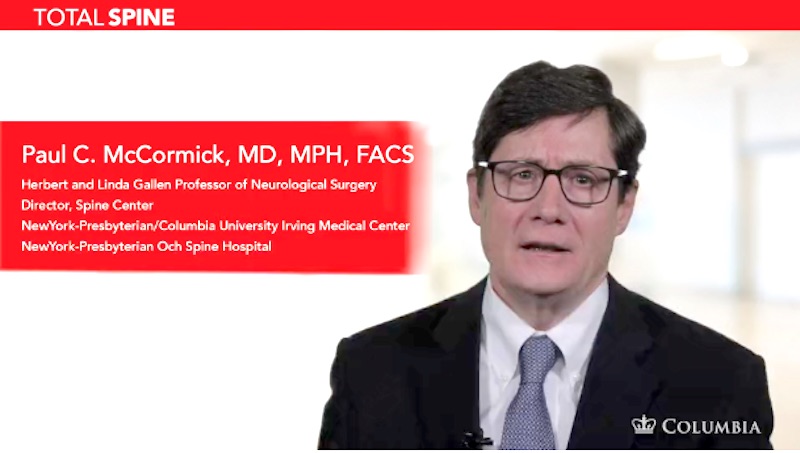| Header | Text |
| Summary | Hangman = a person who performs judicial (judge-ordered) hangings
Fracture = a break in a bone
Hangman’s fracture is a break in a specific part of one bone in the neck.
Bones of the spine are called vertebrae. The bone involved in hangman’s fracture is the second vertebra, toward the top of the neck, close to the skull. It is designated as C2: “C” for its location in the cervical spine (spine in the neck), and “2” for its position as the second bone in that spinal segment. C2 is also called the axis.
Like every bone in the spine, C2 is made of two main sections. One is a strong, solid, cylindrical part called the body. The other is an arch of bone, called the lamina, which encloses the spinal canal and protects the spinal cord.There is a projection of bone that connects the body to the lamina, known as the pars interarticularis. In a hangman’s fracture, the pars of C2 fractures, or breaks, on both sides. At the same time, the C2 body may move out of position relative to the vertebra below, C3.
This is the type of fracture supposedly created by judicial hangings.
|
| Symptoms | The most common symptom of hangman’s fracture is neck pain following a fall or motor vehicle accident. However, if the trauma has caused other damage to the body, the neck pain may not be immediately noticed. Therefore, prompt medical evaluation is necessary after any such trauma.
The most important concern with hangman’s fracture is injury to the spinal cord.
In many cases, the spinal cord escapes injury when hangman’s fracture occurs. At the moment of impact, a hangman’s fracture results in increased space surrounding the spinal cord, thus avoiding immediate compression and injury to the spinal cord. This is a fairly unique feature of this injury. However, the fracture can be very unstable. Without treatment, the bones may shift, leading to increasing deformity that can result in serious damage to the spinal cord or progressive pain. If the spinal cord is damaged, symptoms can include pain, sensory loss, weakness, paralysis, and/or death.
|
| Causes and Risk Factors | Hangman’s fracture happens when the head is snapped up and back with great force, which is known as a hyperextension injury. The most common causes of this injury are falls and car accidents. Some sports injuries or collisions can also cause this fracture.
|
| Tests and Diagnosis | When hangman’s fracture is a result of major trauma, it is usually found as part of a patient’s evaluation in the emergency department.
Hangman’s fracture may be diagnosed and evaluated with the following procedures:
- X-ray (also known as plain films) –test that uses invisible electromagnetic energy beams (X-rays) to produce images of bones. Soft tissue structures such as the spinal cord, spinal nerves, the disc and ligaments are usually not seen on X-rays, nor on most tumors, vascular malformations, or cysts. X-rays provide an overall assessment of the bone anatomy as well as the curvature and alignment of the vertebral column. Spinal dislocation or slippage (also known as spondylolisthesis), kyphosis, scoliosis, as well as local and overall spine balance can be assessed with X-rays. Specific bony abnormalities such as bone spurs, disc space narrowing, vertebral body fracture, collapse or erosion can also be identified on plain film X-rays. Dynamic, or flexion/extension X-rays (X-rays that show the spine in motion) may be obtained to see if there is any abnormal or excessive movement or instability in the spine at the affected levels.
- Magnetic resonance imaging (MRI) – a diagnostic procedure that uses a combination of large magnets, radiofrequencies, and a computer to produce detailed images of organs and structures within the body.
- Computed tomography scan (CT scan) – a diagnostic imaging procedure that uses a combination of X-rays and computer technology to produce detailed images of the body. A CT scan shows detailed images of any part of the body, including the bones, muscles, fat, and organs. CT scans are more detailed than general X-rays.
|
| Treatments | The goals of treatment are to protect the spinal cord and restore spinal alignment and stability. Several treatment options are available.
In some cases, immobilization and bracing can allow the fracture to heal on its own. However, if the fracture is unstable, surgical intervention is often considered the best choice. Surgeons can restore proper spinal alignment and fix the spine in place with wires, plates, and/or screws.
Most patients do quite well with treatment.
|
| Preparing for Your Appointment | Drs. Paul C. McCormick, Michael G. Kaiser, Peter D. Angevine, Alfred T. Ogden, Christopher E. Mandigo, Patrick C. Reid and Richard C.E. Anderson (Pediatric) are experts in treating traumatic spinal conditions such as hangman’s fracture. They can also offer you a second opinion.
|


